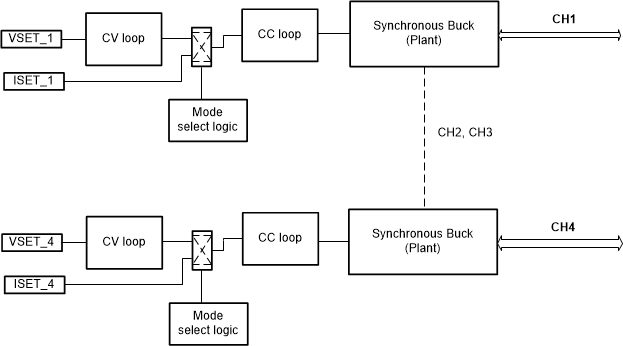TIDUEY0 November 2020
- Description
- Resources
- Features
- Applications
- 5
- 1System Description
- 2System Overview
- 3Hardware, Software, Testing Requirements, and Test Results
- 4Design and Documentation Support
- 5About the Author
2.2.2 Feedback Controller
A C2000 must perform three actions in closed loop systems, which are sensing, control effort calculation, and output generation. For a digitally-controlled buck converter it will be reading and normalizing ADC current and voltage data, calculating error and compensation, and finally generating the duty cycle. CPU utilization for these tasks should not exceed 50%.
Figure 2-2 shows the feedback controller for a test channel. A multi-feedback controller is used to achieve smooth constant-current to constant-voltage transition where inner loop is always in constant-current mode. Upon detection of constant-voltage mode, the constant-voltage loop output is connected to the constant-current loop. Each test channel takes less than 500 CPU cycles. For a buck converter running at 100-kHz switching frequency and controller running at 10 kHz, it will only utilize 40% of total CPU to simultaneously control 8 test channels. The CPU utilization can be further reduced by half if the controller is implemented on the control-law accelerator (CLA), C2000 co-processor.
 Figure 2-2 CCCV Feedback Controller.
Figure 2-2 CCCV Feedback Controller.